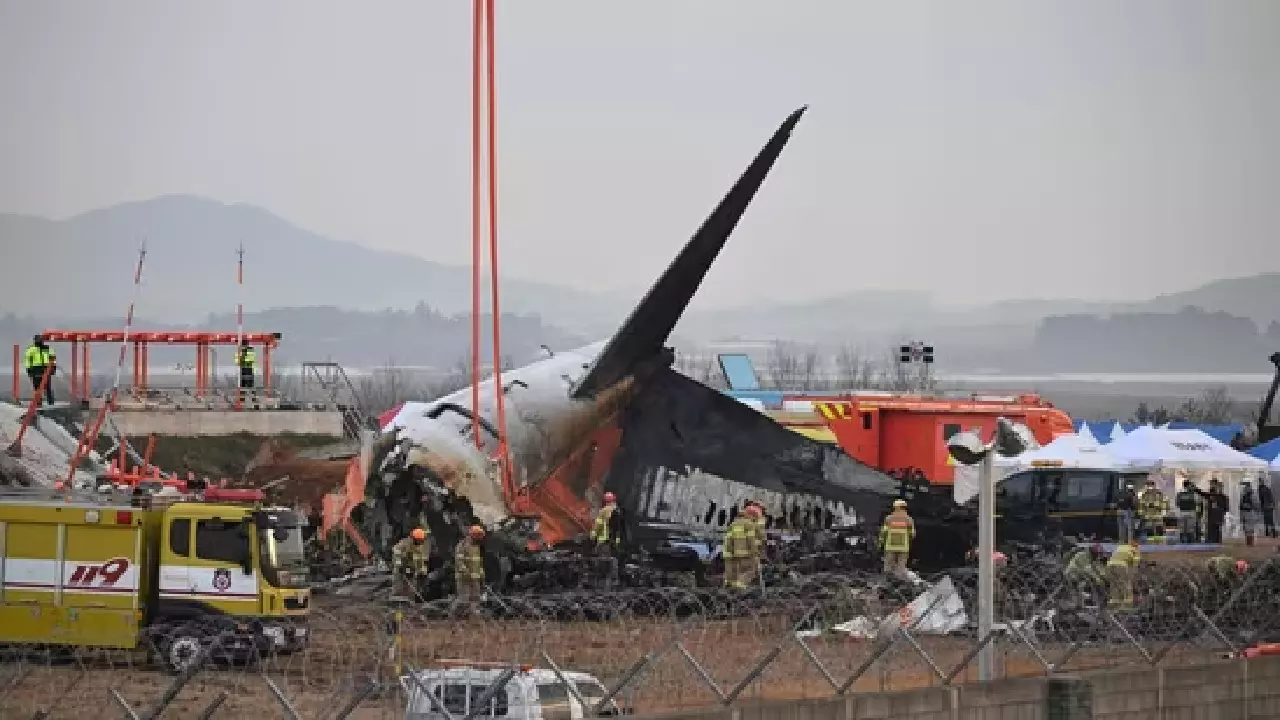Pilot Declares Mayday: What Led to the Jeju Air Plane Crash in South Korea?
Dramatic footage captures the plane skidding along the runway, leaving a trail of smoke, before slamming into a wall at the end and erupting in flames.
Plane Crash

A Jeju Air flight from Bangkok to South Korea, carrying 181 people, crashed during its landing attempt on Sunday, resulting in 179 fatalities. Only two survivors, both flight attendants, were rescued from the wreckage.
The Boeing 737-800, operated by the low-cost carrier Jeju Air, had been warned about a potential bird strike by the control tower as it made its first landing attempt at Muan airport, after departing from Bangkok at around 9:00 am local time (0000 GMT). Shortly after, the pilot declared a "mayday" and attempted a second landing. Dramatic footage showed the plane attempting a belly landing, its landing gear still retracted. The plane skidded along the runway, trailing smoke, before crashing into a wall at the end of the runway and bursting into flames.
The crash claimed the lives of 175 passengers and four of the six crew members on board. Among the victims, aged three to 78, all were Korean except for two Thai nationals.
Rescue workers recovered two survivors: flight attendants aged 25 and 33.
The cause of the accident is under investigation, with authorities focusing on the possibility of a bird strike and adverse weather conditions as contributing factors.
Aviation expert Philip Butterworth-Hayes suggested that a combination of catastrophic events led to such a devastating loss of life, noting that crash protection systems on modern aircraft are generally robust. He also indicated that the runway, measuring 2,800 meters (9,200 feet), was not likely a contributing factor, as similar-sized planes have safely used it before.
Both the flight data recorder and cockpit voice recorder have been recovered for investigation.
A bird strike, which occurs when birds collide with an aircraft, can be hazardous, especially if large birds are ingested into the engines. Though rare, such incidents can lead to engine failure and other serious accidents, such as the 2009 "Miracle on the Hudson" event.
Following the crash, hundreds of emergency responders and military personnel were deployed to the scene. The acting president of South Korea declared the area a special disaster zone. Meanwhile, family members of the victims anxiously waited at the airport.
The crash occurred amid a political crisis in South Korea, as the country faced turmoil following President Yoon Suk Yeol's declaration of martial law on December 3, days before his impeachment. Acting President Choi Sang-mok convened an emergency meeting and visited the crash site to assess the situation.

